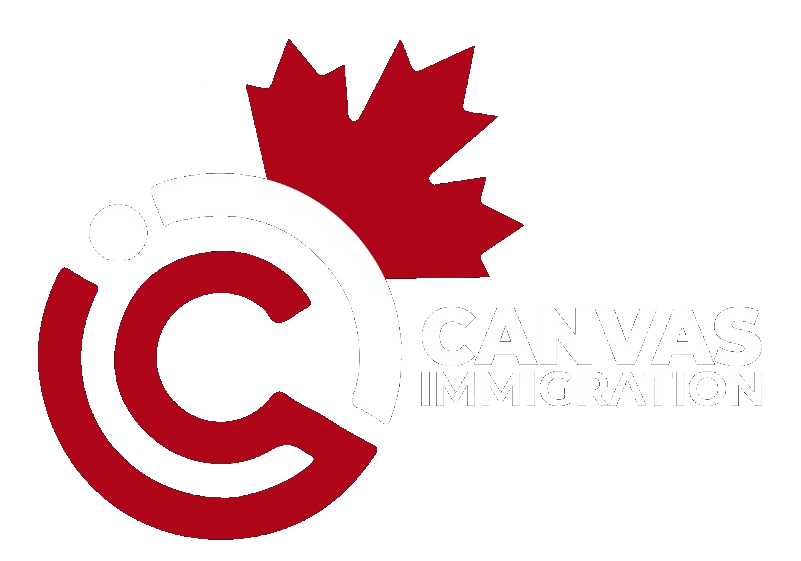Last Updated On 6 February 2025, 8:44 AM EST (Toronto Time)
In 2024, Canada has set a new record by admitting 483,395 new permanent residents, almost meeting the official annual immigration target of 485,000.
The latest data reveals critical insights into where newcomers are settling, their countries of origin, and how Canada did against its historical ambitious immigration targets.
This comprehensive article delves into the monthly trends, yearly comparisons, top source countries, and regional distribution of these new permanent residents
Here’s a detailed breakdown of the latest trends shaping Canadian immigration.
Table of Contents
Since 2015, Canada’s immigration numbers have steadily increased, with a few fluctuations due to global events like the COVID-19 pandemic.
| Year | Permanent Residents Admitted | Official Immigration Target |
|---|---|---|
| 2024 | 483,395 | 485,000 |
| 2023 | 471,820 | 465,000 |
| 2022 | 437,630 | 431,645 |
| 2021 | 406,055 | 401,000 |
| 2020 | 184,600 | 341,000 |
This trend underscores Canada’s increasing reliance on immigration to bolster its population and workforce.
For instance, in 2023, Canada surpassed its target of 465,000, showing precise planning and execution in immigration policy.
The significant jump from 2020 to 2021, where the number increased from 341,000 to 401,000, reflects a recovery from the global slowdown due to the pandemic, with Canada ramping up efforts to meet economic and demographic needs.
The consistent increase in targets from 2015 onwards indicates a policy direction focused on growth through immigration.
Here’s how the number of new permanent residents has changed in recent years:
The monthly breakdown of new permanent residents admitted in 2024 reveals a pattern of fluctuation in immigration intake throughout the year.
Canada saw a strong start to the year, with January and May recording the highest PR admissions. However, February had the lowest at 39,105.
| Months | Number of Permanent Residents |
| January | 47,765 |
| February | 39,105 |
| March | 34,870 |
| April | 42,605 |
| May | 46,850 |
| June | 44,700 |
| July | 47,870 |
| August | 39,255 |
| September | 37,140 |
| October | 34,475 |
| November | 36,900 |
| December | 31,860 |
| 2024 Total | 483,395 |
From April to July, there was a significant increase in the number of permanent residents admitted, peaking in July with 47,870 new PRs.
This peak could be attributed to several factors, including seasonal trends where immigration often increases during the warmer months due to better travel conditions, or perhaps due to policy changes or processing efficiencies implemented by Immigration, Refugees and Citizenship Canada (IRCC).
Post-July, there’s a noticeable decline, with December recording the lowest intake at 31,860.
This decline might reflect end-of-year administrative slowdowns or a natural decrease in processing due to holidays.
Overall, the total of 483,395 exceeds the target set for 2024, indicating a robust immigration system capable of meeting ambitious goals.
Top 10 Source Countries for PRs in 2024
India remains the largest source country, although there’s a decrease from 139,790 in 2023 to 127,320 in 2024.
This could be due to geopolitical tensions or changes in Canadian immigration policies affecting the Express Entry system, which many Indian applicants use.
| Country | 2024 | 2023 | Year-on-Year Change |
| India | 127,320 | 139,790 | -8.92% |
| Philippines | 32,300 | 26,965 | 19.78% |
| China | 29,950 | 31,785 | -5.77% |
| Cameroon | 21,200 | 11,685 | 81.43% |
| Nigeria | 20,380 | 17,465 | 16.69% |
| Eritrea | 16,585 | 10,680 | 55.29% |
| Afghanistan | 12,280 | 20,180 | -39.15% |
| Pakistan | 11,940 | 11,860 | 0.67% |
| Iran | 11,150 | 10,680 | 4.40% |
| France | 9,940 | 10,075 | -1.34% |
The Philippines and China follow, with the Philippines showing a substantial increase, suggesting a growing popularity or perhaps more favourable visa pathways.
Notably, Cameroon’s numbers have nearly doubled (+81.36%), which might indicate targeted immigration programs or increased awareness and accessibility of Canadian immigration processes in Cameroon.
Conversely, Afghanistan shows a decrease, which could be linked to global resettlement dynamics or changes in Canada’s refugee policies.
The presence of countries like Nigeria, Eritrea, and Iran in the top list highlights Canada’s appeal to a broad range of nationalities, possibly due to its reputation for multiculturalism and economic opportunities.
All the Atlantic provinces (Newfoundland and Labrador, Prince Edward Island, Nova Scotia, and New Brunswick) showed growth in the number of new PRs.
New Brunswick had the highest increase at 35.17%, which might be due to targeted immigration initiatives like the Atlantic Immigration Program aimed at boosting population and addressing labour shortages.
Nova Scotia also saw a significant rise of 21.01%.
| Geography | 2024 New PRs | 2023 New PRs | Year-on-Year Change |
| Canada | 483,395 | 471,820 | 2.45% |
| Ontario | 205,700 | 206,820 | -0.54% |
| Alberta | 66,350 | 57,595 | 15.20% |
| British Columbia | 63,105 | 70,825 | -10.90% |
| Quebec | 59,425 | 52,810 | 12.53% |
| Manitoba | 24,690 | 24,920 | -0.92% |
| Saskatchewan | 23,155 | 25,175 | -8.02% |
| New Brunswick | 15,490 | 11,460 | 35.17% |
| Nova Scotia | 14,285 | 11,805 | 21.01% |
| Newfoundland and Labrador | 5,755 | 5,485 | 4.92% |
| Prince Edward Island | 3,980 | 3,620 | 9.94% |
| Yukon | 940 | 890 | 5.62% |
| Northwest Territories | 420 | 330 | 27.27% |
| Nunavut | 65 | 55 | 18.18% |
| Province/territory not stated | 35 | 30 | 16.67% |
Alberta: A significant increase of 15.20% suggests strong economic recovery or growth in sectors like oil and gas, technology, or other industries, making it more attractive for new immigrants.
Quebec: With a 12.53% increase, Quebec continues to attract immigrants, likely influenced by its unique immigration policies that favour French-speaking immigrants and its cultural appeal.
British Columbia: A decrease of -10.90% might be due to the high cost of living in cities like Vancouver, which could be pushing potential immigrants towards more affordable regions or due to local economic conditions.
Saskatchewan: This province saw a notable decrease of -8.02%, which could reflect economic challenges or shifts in immigration focus towards other provinces.
Manitoba: A minor decrease of -0.92% indicates a relatively stable intake, with perhaps a small shift in immigrant preferences or economic opportunities.
Ontario: A slight decrease of -0.54% suggests a stabilization or slight shift in immigration patterns, possibly due to housing market conditions or economic factors making other regions more attractive.
The Ottawa region had the highest percentage increase at 28.28%, which could be due to the presence of federal government jobs, tech sector growth, and a relatively lower cost of living compared to Toronto or Vancouver.
| City | New PRs In 2024 | New PRs in 2023 | Year-on-Year Change |
| Toronto | 124,660 | 135,950 | -8.30% |
| Vancouver | 47,575 | 54,920 | -13.37% |
| Montréal | 38,700 | 38,425 | 0.72% |
| Calgary | 31,140 | 27,435 | 13.50% |
| Ottawa – Gatineau (Ontario part) | 27,330 | 21,305 | 28.28% |
| Edmonton | 24,055 | 21,660 | 11.06% |
| Winnipeg | 18,400 | 19,975 | -7.88% |
| Halifax | 10,540 | 8,940 | 17.90% |
| Kitchener – Cambridge – Waterloo | 10,210 | 9,695 | 5.31% |
| Saskatoon | 8,505 | 9,655 | -11.91% |
| Québec City | 8,360 | 5,890 | 41.94% |
| Regina | 8,090 | 9,410 | -14.03% |
| London | 7,470 | 7,050 | 5.96% |
| Moncton | 7,165 | 5,020 | 42.73% |
| Hamilton | 7,020 | 6,840 | 2.63% |
Calgary experienced a notable increase of 13.50%, suggesting a growing attractiveness, possibly due to economic recovery in the energy sector or broader economic diversification efforts.
Edmonton also saw growth at 11.06%, which might be linked to similar economic factors or perhaps the affordability of living compared to other major cities.
Winnipeg saw a decrease of 7.88%, which might reflect challenges in attracting new residents, possibly due to economic conditions or perceptions of fewer opportunities compared to other cities.
Montreal shows a slight increase of 0.72% in new PRs.
Toronto and Vancouver: Both cities experienced a decrease in the number of new permanent residents in 2024 compared to 2023, with Toronto seeing an 8.30% drop and Vancouver a 13.37% decrease.
Halifax and Moncton both showed significant increases, with Halifax at 17.90% and Moncton at an impressive 42.73%.
The analysis of these datasets indicates a dynamic and responsive immigration system in Canada, with trends showing both continuity and change.
The monthly data suggests seasonal impacts on immigration, while the yearly data reflects strategic increases in immigration targets to meet national goals.
The influx of 483,395 new permanent residents in 2024 almost meets the set target but also underscores Canada’s role as a beacon for global talent and diversity.
Canada has reduced the annual target of the number of permanent residents to be welcomed to 395,000 for 2025 and 380,000 for 2026.
As per the latest official IRCC data, there were 836,900 permanent residency applications under processing on December 31, 2024, which is enough to meet the official target of permanent residents in 2025 and 2026 together.
So Canada is expected to easily hit the annual immigration targets over the next couple of years, but it will be difficult for new applicants to find a spot for permanent residence.
One can expect increased processing times to manage the existing inventory and high competitiveness in being selected for the permanent residency over the next 3 years.
As we move forward, it will be crucial to monitor how these new residents integrate into Canadian society, contribute to the economy, and how regional policies adapt to this influx.
How many immigrants came to Canada in 2023?
Canada welcomed 471,820 new permanent residents in 2023.
Is Canada still accepting new applications for permanent residency?
Yes, Canada continues to invite skilled immigrants to apply for permanent residency, but focus is on temporary residents already inside the country and those meeting the labour market needs.
Kamal Deep Singh, RCIC
Something went wrong. Please refresh the page and/or try again.
You may also like: Tips For Canada PR Applicants To Avoid Procedural Fairness Letter
Full List Of US Goods In Canada Affected By Tariffs Effective Feb 4
New Canada Caregiver Programs To Open On March 31, 2025
Top 10 Most Dangerous Cities In Canada For 2025 | New List

